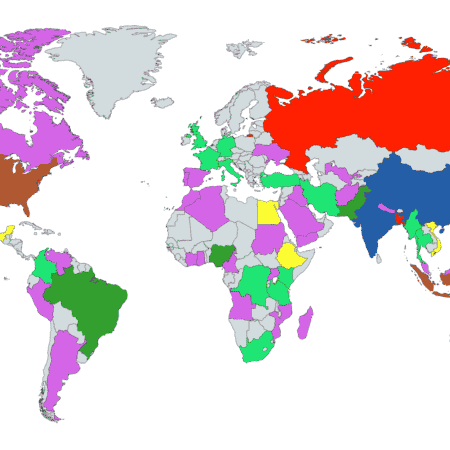
Pakistan Institute of Development Economics
- Home
Our Portals
MenuMenuMenuMenuMenuMenuMenu - ResearchMenuMenuMenuMenuMenuMenuMenu
- Discourse
- The PDR
- Our Researchers
- Academics
- Degree Verification
- Thesis Portal
- Our Portals

An Ad and a Postal Stamp!
Celebrating World Population Day
It is July 11 today. The day we go through our token actions and words to commemorate World Population Day. Thanks to the social distancing and ‘stay at home’ directives these days, we were spared of the yearly ‘Population March’. July is a hot and humid month anyway, and marching for something with such an unclear agenda is doubly unpleasant.
Just so that I do not miss the day and all the things that annoy me about it, the morning paper had an advertisement that acted as a good reminder for me. Yes, I am very old-fashioned and still get the paper version of the newspapers! Coming back to the ad, it was one by the Punjab Population Innovation Fund (PPIF), a Punjab Government organisation. To mark the day, the PPIF in collaboration with the University of Health Sciences (UHS) announced launching a helpline to deal with maternal and child health and family planning, with female doctors attending all calls. Among other things, the consultation services provided include family planning counselling, non-communicable diseases, hygiene practices, basic medical advice, nutrition and referral services. Very noble indeed!
But don’t men need any of these services? And especially, is the burden of family planning only on women? I am yet to see any advertisement, by any government (federal or provincial) or organisation, that talks about such issues targeting the male population. Isn’t a child’s health is a father’s responsibility too? Aren’t we strengthening the gender stereotypes with such ads? Don’t males have ‘reproductive health’? Why is population, and the Population Day, only linked to women and that too with a family planning focus? ‘Family planning’ too is a misnomer. What we mean is a family limitation. Maybe if we actually start planning families, the limitation part would follow by itself.

We also had a special postal stamp to mark the day this year. It was a stamp that reminded me of a family planning advertisement dating back to the 1960s. Have a look at both the ads and see the similarities. Let’s count a few:
- Both show adults in ethnic attires
- Both show equal sex ratios of the children in each family
- Both show prosperity in a very impersonal way.

Some may, but how many in even rural areas would relate to a family looking like this now? Under what law of genetics do these ads/stamps ensure that a couple would have a perfect son-daughter ratio? And how many altruistic couples would be motivated to have a small family because it would make the country greener (2020) or help it have a dam (1968)? Why not have ads that show just one or two girls or boys only? Why not show symbols of personal prosperity which people can relate to? The same goes for the locations and attires that are shown in such campaigns.
It is not just the ads linked to the population directly that present such stereotypes, they are found everywhere. Just to show what I mean, let’s have a look at the insurance advertisements in Pakistan. Just a glance at these is enough to conclude that girls are to get married while boys are to get an education and achieve success in all sorts of fields. There are very few exceptions to this rule.

In the ads above, we can see that girls need protection (bottom left) and get married (top left), while boys need to get educated (top left and right) and be successful (bottom right). The ad on the top left, using an underage bride, is wrong in every possible way.
Going back to World Population Day. The issue of population, if it could be called so, can be better tackled if we approach it in a broader context. The whole discourse around ‘controlling’ the population needs to be changed. Changing perceptions about gender roles is an essential step. Educated women who are gainfully employed do not have smaller families just because they have easy access to contraception. It is more a matter of demand than supply. For them, the opportunity cost of having children is much higher than their counterparts. Most programmes in the country focus on the supply side of ‘population planning’, and miss putting in the effort to create a demand.

The stagnating fertility decline and reduced use of modern contraceptives, both evident from the latest Pakistan Demographic and Health Survey (PDHS 2017-18), should be enough to tell us that a change in strategy is needed. A more forward-looking image of females is required, with a stress on education, employment, and most importantly, delayed age at marriage. Males should be projected to be equally responsible for ‘plan’ning families as females. Female sterilisation is the most commonly used method of modern contraception used in the country. The process is long, painful, and irreversible. If the couples are looking for a failure-proof method, why not go for vasectomy which is even reversible?
The entire burden of infertility is being shouldered by females. It is time we stop linking reproduction and/or reproductive health with females alone, and make males an equal partner. Let there be helplines and advertisements in newspapers about males’ reproductive health. It would be a great service to them as well, as many males suffer in silence in the name of preserving their masculinity.
Let’s start celebrating World Population Day in the real sense of the word, including everyone and all their issues in it. And before I sign off, one final request to all those designing such campaigns. Boys want to get married as much as girls want to get educated; and a small, happy family can have children of the same sex.
A very happy World’s Population Day to you all!
Download full PDF


